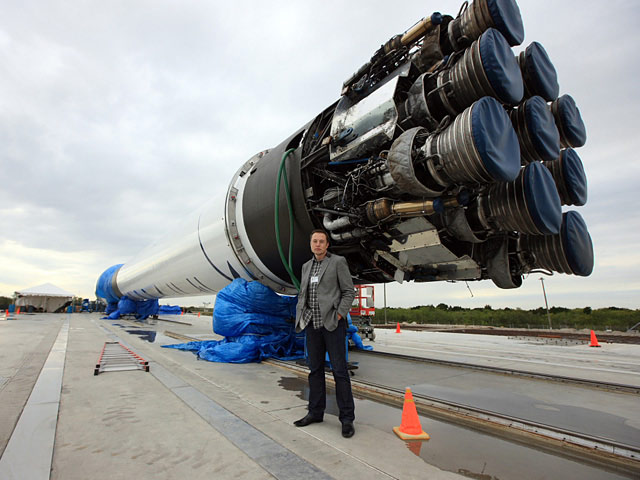
The fevered speculation about billionaire entrepreneur Elon Musk's mysterious "Hyperloop" transport system is about to come to an end.
Musk, the visionary behind electric-car firm Tesla and the private spaceflight company SpaceX, has said he will unveil a Hyperloop design on Monday (Aug. 12), after teasing the world about the superfast travel technology for more than a year.
The solar-powered Hyperloop would allow passengers to get from Los Angeles to San Francisco in less than 30 minutes, Musk has said, meaning it must travel at speeds greater than 600 mph (966 km/h). The system would be cheap and convenient, he added, with tickets costing less than a seat aboard a plane or train and Hyperloop vehicles departing frequently from their various stations.
Though we don't know exactly how the Hyperloop will work or what it will look like, Musk has dropped some hints since first disclosing the concept in July 2012. For example, this past May he described the Hyperloop as a "cross between a Concorde and a railgun and an air hockey table."
Using that statement as inspiration, self-described "tinker" John Gardi drew up a design of a system that uses air to blast cars through long tubes. Gardi's concept "is the closest I've seen anyone guess so far," Musk tweeted on July 15. (See the diagram on Gardi's Twitter page here.)
Musk has shared some other news about the project lately, revealing that he probably won't have much time to develop the Hyperloop — at least not in the near future.
"I have to focus on core Tesla business and SpaceX business, and that's more than enough," Musk said Tuesday (Aug. 7) during a conference call with Tesla investors, Gizmodo reported.
Get the Space.com Newsletter
Breaking space news, the latest updates on rocket launches, skywatching events and more!
During the call, Musk expressed hope that the worldwide community of engineers and inventors can make something happen with the Hyperloop design he puts out there. But he didn't close off the possibility of helping out in the future.
"If nothing happens for a few years, with that I mean maybe it could make sense to make the halfway path with Tesla involvement," Musk said, according to Gizmodo. "But [what] I would say is, you shouldn't be speculative."
Follow Mike Wall on Twitter @michaeldwall and Google+. Follow us @Spacedotcom, Facebook or Google+. Originally published on SPACE.com.
Join our Space Forums to keep talking space on the latest missions, night sky and more! And if you have a news tip, correction or comment, let us know at: community@space.com.

Michael Wall is a Senior Space Writer with Space.com and joined the team in 2010. He primarily covers exoplanets, spaceflight and military space, but has been known to dabble in the space art beat. His book about the search for alien life, "Out There," was published on Nov. 13, 2018. Before becoming a science writer, Michael worked as a herpetologist and wildlife biologist. He has a Ph.D. in evolutionary biology from the University of Sydney, Australia, a bachelor's degree from the University of Arizona, and a graduate certificate in science writing from the University of California, Santa Cruz. To find out what his latest project is, you can follow Michael on Twitter.











